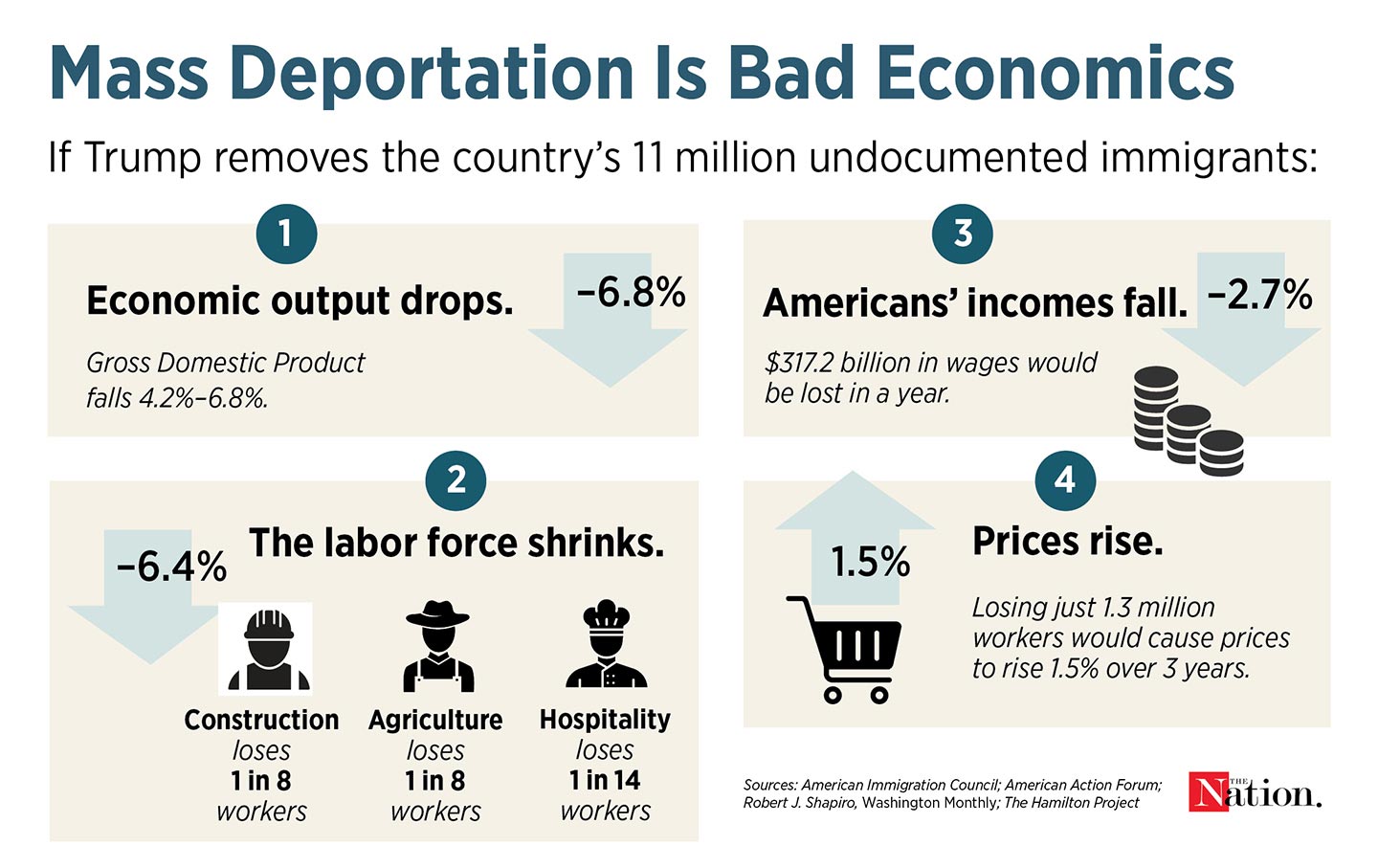How Can We Wean Ourselves Off Our Country’s Military Dependency?
Moving resources and skills and jobs from the military-industrial complex to civilian sectors is a big project. But it could start in your own community.

Protesters hold signs as they pass Massachusetts National Guard Military Police during a United Against Racist Police Terror Rally on June 7, 2020.
(Jessica Rinaldi / The Boston Globe via Getty Images)
This article originally appeared at TomDispatch.com. To stay on top of important articles like these, sign up to receive the latest updates from TomDispatch.com.
My name is Frida and my community is military dependent. (I feel, by the way, like I’m introducing myself at a very strange AA-like meeting with lousy coffee.) As with people who have substance abuse disorders, I’m part of a very large club. After all, there are weapons manufacturers and subcontractors in just about every congressional district in the country, so that members of Congress will never forget whom they are really working for: the military-industrial complex.
Using the vernacular of the day, perhaps it’s particularly on target to say that our whole country suffers from Militarism Abuse Disorder or (all too appropriately) MAD.
I must confess that I don’t like to admit to my military dependency. Who does? In my case, it’s a tough one for a few reasons, the biggest being that I’m an avowed pacifist who believes that war is a crime against humanity, a failure of the imagination, and never (no, not ever) necessary. Along with the rest of my family of five, I live below the taxable income level. That way, we don’t pay into a system that funds war preparations and war-making. We have to be a little creative to make our money stretch further and we don’t eat out or go to the movies every week. But we don’t ever feel deprived as a result. In essence, I’ve traded career success and workplace achievement for a slightly clearer conscience and time—time to work to end militarism and break our collective addiction!
The Peter G. Peterson Foundation estimates that, in 2023, the United States of America spent $142 billion buying weapons systems and another $122 billion on the research and development of future weaponry and other militarized equipment. And keep in mind that those big numbers represent only a small fraction of any Pentagon budget, the latest of which the Pentagon’s proposing to be $849.8 billion for 2025—and that’s just one year (and not all of what passes for “national defense” spending either). A recent analysis by the Costs of War Project at Brown University calculated that, since September 11, 2001, the United States has used an estimated $8 trillion-plus just for its post-9/11 wars. Talk about addiction! It makes me pretty MAD, if I’m being honest with you!
It would be nice to ignore such monstrous numbers and the even bigger implications they suggest, to unfocus my eyes slightly as I regularly drive by the fenced facilities, manicured office parks, and noisy, bustling shipyards that make up the mega-billion-dollar-a-year industry right in my own neighborhood that’s preparing for… well, yes… the end of the world. Instead, I’m trying to be clear-eyed and aware. I’m checking my personal life all the time for compromise or conciliation with militarism: Am I being brainwashed when I find myself cheering for the fighters in that blockbuster movie we splurged on? Am I doing enough to push for a ceasefire in Gaza? Am I showing up with young people in my community who are backing higher salaries for teachers and no more police in schools? And of course, I keep asking myself: How are my daily consumer decisions lining up with my lofty politics?
I don’t always like the answers that come up in response to such questions, but I keep asking them, keep trying, keep pushing. Those who suffer from Militarism Abuse Disorder can’t even ask the questions, because they’re distracted by the promises of good jobs, nice apartments, and cheap consumer goods that the military-industrial complex is always claiming are right around the corner.
But here in my community, they never deliver!
New London: A Profile of Militarism Abuse Disorder
New London is a town of fewer than 28,000 people. The median income here is a little over $46,000—$32,000 less than the state average. We are a very old community. Long part of the fishing and hunting grounds of the Eastern Pequots, Nehantics, Mashantucket Pequot, and Mohegan, the city was founded in the 1600s and incorporated in the late 1700s. You see evidence of our age in the shape of our streets, curbed and meandering, long ago carved out of fields by cows and wagons, and in our architecture—aging industrial buildings, warehouses, and ice houses in the neighborhoods where their workers once lived—now derelict and empty or repurposed as auto repair stores or barber shops.
Sometimes I watch, almost mesmerized by the ferocious energy of all those cars careening up Howard Street on their way to work at General Dynamics. Car after car headed for work at the very break of day. Every workday at about 3 pm, they reverse course, a river of steel and plastic rushing and then idling in traffic, trying to get out of town as fast as possible.
General Dynamics Electric Boat repairs, services, and manufactures submarines armed with both conventional and nuclear weapons. And it certainly tells you something about our world that the company is in the midst of a major hiring jag, looking to fill thousands of positions in New London, Groton, and coastal Rhode Island to build the Columbia-class submarine, the next generation of nuclear-powered, nuclear-armed subs. Those behemoths of human ingenuity and engineering will cost taxpayers a whopping $132 billion, with each of the 12 new boats clocking in at about $15 billion—and mind you, that’s before anything even goes wrong or the schedule to produce them predictably stretches out and out. The company has already solved one big problem: how to wring maximum profits out of this next generation of planet-obliteration-capable subs. And that’s a problem that isn’t even particularly hard to sort out, because some of those contracts are “cost plus,” meaning the company says what the project costs and then adds a percentage on top of that as profit.
Such a cost-plus business bothers me a lot. I could almost be converted into a hard-nosed militarist if our weapons production industry was a nonprofit set of organizations, run with the kind of shoestring ingenuity that dozens of outfits in New London employ to feed the hungry, house the homeless, and care for the victims of domestic violence.
I break from my traffic-watching fugue on Howard Street to reflect on all that furious effort, all those advanced degrees, all that almost impossible intelligence being poured into making an even better, bigger, faster, sleeker, stealthier weapons-delivery system, capable of carrying and firing conventional and nuclear warheads. Why? We have so many already. And as the only nation that has ever used nuclear weapons in war (in 1945) and has tested, perfected, and helped proliferate the technology of ultimate destruction for the last eight decades, the United States should be leading the charge to denuclearize, disarm, and abolish such weaponry. That, after all, is what’s called for in the Treaty on the Prohibition of Nuclear Weapons.
If we are ever going to break our MAD addiction, one place to start is here on Howard Street with people who make their living working on one tiny component of this incredibly complex system. Economic conversion, moving resources and skills and jobs from the military-industrial complex to civilian sectors, is a big project. And it could indeed begin right here on Howard Street.
You Get What You Pay For
Our small town is also home to the Coast Guard Academy and two private colleges. Add the acreage of those three non-taxpaying institutions to the nearly 30 churches, synagogues, and other houses of worship that enjoy tax-free status here; throw in the dozens of nonprofits that do all the good work and you end up with an awfully small tax base. As a result, the municipal budget leans heavily on commercial taxpayers like General Dynamics Electric Boat, the military-industrial behemoth that moved into 24 acres of prime waterfront real estate in 2009 after it was vacated by the tax scofflaw Pfizer.
General Dynamics, like other military manufacturers, essentially only has one customer to please, the United States government. That makes the cost-plus contracting scheme even more egregious, guaranteeing that, no matter what goes wrong, its profits are always assured. Such a bonkers, counter-capitalist scenario passes all the costs on to American taxpayers and allows the privately held corporation to pocket all the profits, while handing out fat dividends to its shareholders. According to Sahm Capitol, “Over the past three years, General Dynamics’ Earnings Per Share grew by 3.7% and over the past three years, the total shareholder return was 62%.”
Popular
“swipe left below to view more authors”Swipe →For 2024, General Dynamics Electric Boat is paying taxes on property valued at $90.8 million—almost twice as much as that of the next highest taxpayer in our town. But it is also a bone of contention. The company, which paid CEO Phebe Novakovic $22.5 million in salary and stock awards in 2023, has no trouble taking the City of New London to court when they feel like their property is being overvalued or overtaxed. They win, too, so their property valuations yo-yo year to year when New London has been ordered to repay taxes to General Dynamics. Whether they pay taxes based on $90.8 million in property or $57 million doesn’t really matter to the company. It’s literal pocket change to the Pentagon’s third-largest weapons contractor, a company that boasted $42.3 billion in revenue in 2023. But it matters a lot in a place like New London, where the annual budget process routinely shaves jobs from the schools, public works, and the civil service to make the columns all add up.
According to a report by Heidi Garrett-Peltier for the Costs of War Project at Brown University, $1 million of federal spending in the military sector creates 6.9 jobs (5.8 direct jobs and 1.1 in the supply chain). That same $1 million would create 8.4 jobs in the wind energy sector or 9.5 jobs in solar energy. Investing $1 million in energy efficiency retrofits creates 10.6 jobs. Use that $1 million to build streets or highways or tunnels or bridges or to repair schools and it will create “over 40 percent more jobs than the military, with a total multiplier of 9.8 jobs per $1 million spending.”
Wait, what? Are you telling me that, with their lack of transparency, accountability, and their cost-plus contracts, while building weapons systems for the sole purpose of destruction and wasting a lot of money in the process, the military-industrial complex is a lousy job creator? Am I to understand that spending money on just about anything else creates more jobs and more economic activity, while not threatening the world with annihilation?
As I work on a local level in my small town in Connecticut, I see how municipal policy should prioritize small businesses, mom-and-pop stores made of brick and mortar, over multinational corporations or big business. I see the return on investment from a small business in granular and tangible ways: the grocery store owner who starts each day by picking up garbage in his parking lot, the funeral home that sponsors the Little League team, the woman at the art gallery and frame shop who waters the street flowers, or the self-employed local photographer who serves on the board of the cooperative grocery store.
These businesses don’t employ tens of thousands of people, but they also don’t insist on tax abatements that undermine our local budget or fill our crowded streets with commuters hell-bent on getting away from the office and our town as quickly as possible.
You get what you pay for, right? Garrett-Peltier’s Costs of War report goes on to note that “healthcare spending creates more than twice as many jobs for the same level of spending, while education creates up to nearly three times as many jobs as defense spending.… The employment multipliers for these domestic programs are 14.3 for healthcare, 19.2 for primary and secondary education, and 11.2 for higher education; the average figure for education is 15.2 jobs per $1 million spending.”
These are numbers I wish my City Council would commit to memory. In fact, we should all know these numbers by heart, because they counter the dominant narrative that military spending is good for the economy and that good-paying jobs depend on militarism.
The United States is investing trillions of dollars in the military, as well as in weapons contractors like General Dynamics, Boeing, and Lockheed Martin. Every US president in modern history has prioritized the bottom lines of those corporations over a safe and healthy future for the next generation. Consider all of that as just so many symptoms of Militarism Abuse Syndrome. Isn’t it finally time to get really mad at MAD? Let’s kick the habit and get clean!
More from The Nation

Mass Deportations Aren’t Just Evil. They’re Also Terrible Economics. Mass Deportations Aren’t Just Evil. They’re Also Terrible Economics.
Immigrants don’t steal citizens’ jobs and wages. They grow the economy for all.

Why Elon Musk and the GOP Have the Consumer Finance Protection Bureau in Their Crosshairs Why Elon Musk and the GOP Have the Consumer Finance Protection Bureau in Their Crosshairs
Republicans have long wanted to kill the CFPB. With Musk and Russell Vought, they may finally have their chance.

Why DeepSeek’s Surprise Breakthrough Shouldn’t Have Come as a Surprise Why DeepSeek’s Surprise Breakthrough Shouldn’t Have Come as a Surprise
While America was busy with stock buybacks and quarterly profits, China spent decades building an integrated system linking research, manufacturing, and innovation.

Donald Trump’s Retrograde Worship Will Tank America’s Auto Industry Donald Trump’s Retrograde Worship Will Tank America’s Auto Industry
Trump's tariffs will protect the US auto industry just long enough for it to decline into technological obsolescence.

REI Sells the Great Outdoors While Workers Breathe Chemicals in a Windowless Basement REI Sells the Great Outdoors While Workers Breathe Chemicals in a Windowless Basement
Ski shop workers at an REI in New York City went on strike after the company took away their respirators.

In 2025, Martin Luther King Jr.’s Economic Populism Is More Relevant Than Ever In 2025, Martin Luther King Jr.’s Economic Populism Is More Relevant Than Ever
The political media calls Trump a “populist.” But as Dr. King made clear in a 1965 speech, American populism was a movement against everything Trump stands for.


